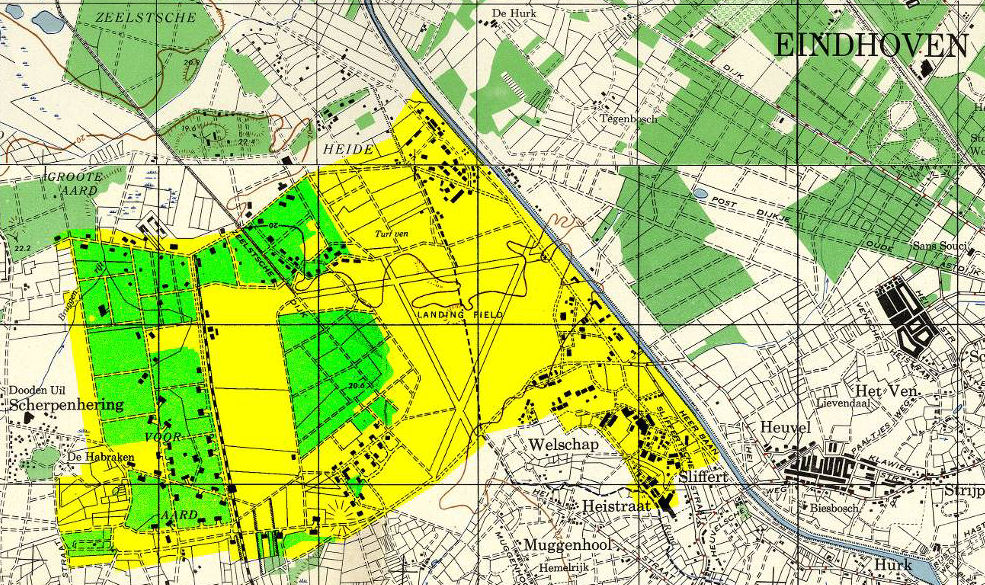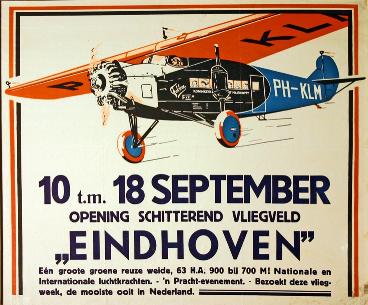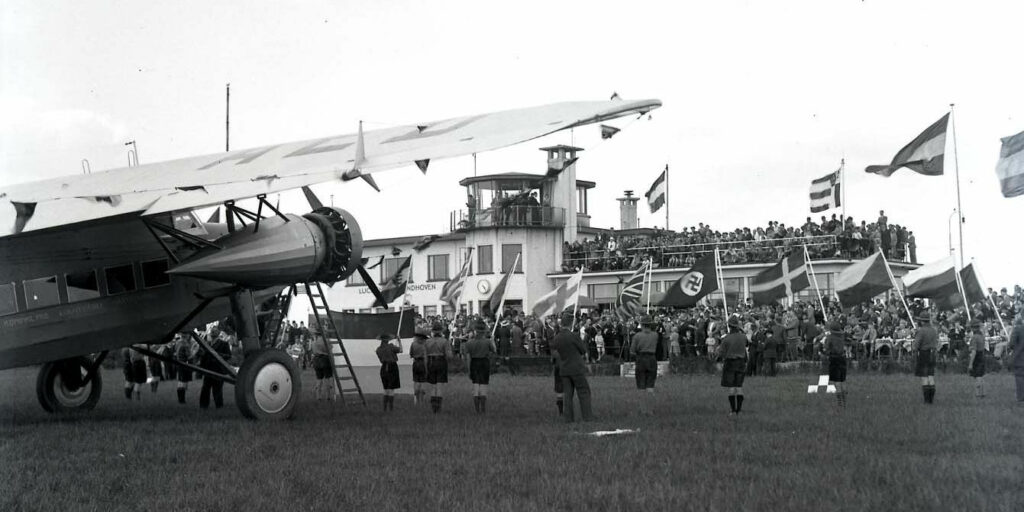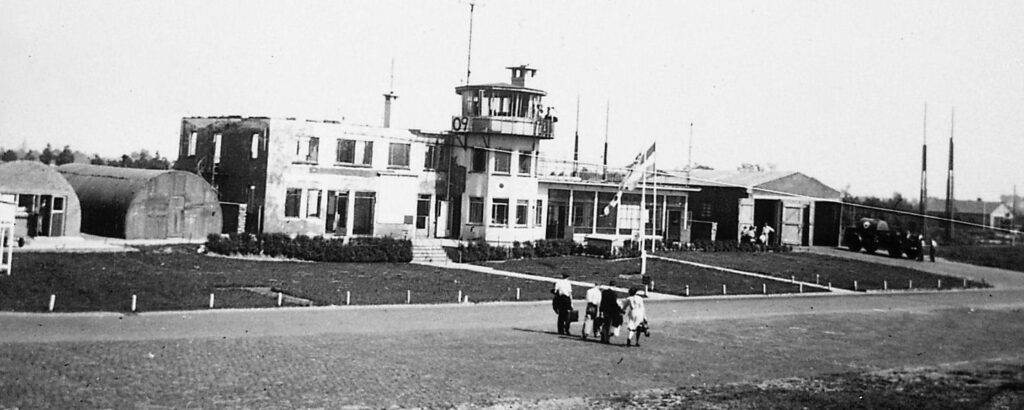For a recent project I made a 3D replica of the very first airport building at the airport of Eindhoven city. You can have a look at the project on the portfolio page. I felt like sharing a couple of things that I did not want to include on the portfolio page. I want to talk about the building itself in more details because I learned a thing or two about the history when I was investigating it. I accidentally stumbled upon an image of the old airport building when I was researching something on World War II. It triggered my curiosity since it's regional history for me as it is located in my own back yard. Well, not literally, it's a 15 minute drive for me. I couldn't help but falling in love with the stylish building that still breathes different, perhaps simpler times. After doing some research on it, I decided to build a replica in 3D using Blender. That was three days ago.

In the city of Eindhoven in the Netherlands we have a reasonably busy airport nowadays. I believe it's the second largest of the country next to Schiphol. I actually used to work here for a while in the past. It hosts both commercial flights and military traffic. It's located right outside the city of Eindhoven. Although it's location is a bit different now compared to the where the airport initially was located.
I became interested in the very first airport building. This building still exists at the original spot! It's actually an official monument building and this means nobody is allowed to demolish or drastically change the building. The building is nowadays actually located in the middle of a residential living area.


At some point in the past when the airport was growing, the noise became a real issue for the people living in the city. So the city council decided to extend the airport with a couple of airstrips that were positioned elsewhere. The building became obsolete, abandoned, and in decay, but thankfully it was eventually restored many years later, and it was actually used again by a local community center, and later on a bed & breakfast.
Plans to build an airport for Eindhoven emerged in 1921 but it took a little over a decade before it was actually built. The airport started out with some wooden buildings in 1932 and was mostly used for private civilian flights and the testing of proto-types by Fokker and others. In the year 1934 mister D.Roosenburg started building this first real building that officially opened it's doors in 1935 and they initially called the airport: burgerluchthaven Welschap. In 1939 the Dutch Air Force acquired the airfield, but they barely had a chance to use it because a year later the Germans invaded the Netherlands.

The German forces took over the airport and named it Fliegerhorst Eindhoven, and started using it as well. The Germans camouflaged the new building to make it look like a windmill. They also greatly improved on the airfield as they added three paved runways, 52 hangars and other support buildings. I learned that many German Heinkel He 111 planes departed here to fly towards the UK and drop their bombs. I'm currently working on a scene in Blender where I'll depict a scene set during WWII at Eindhoven Airport where a Heinkel He 111 is taking off. More on that soon!
Fast forward five years of German occupation and at the end of the war the Germans destroyed large area's of the airport before abandoning it in those last moments of the war. During operation Market Garden American paratroopers captured the airfield, repaired the damage the Germans had left behind and was put to good use soon after. When the war was over the airfield was used for several more years by the allied forces, and many American, Canadian and British planes flew to the airfield to land safely.
It wasn't until 1952 that the airport was handed over back to the Royal Netherlands Air Force. From that moment onward the airfield was a military base. From the fifties to the nineties it was a home for a collection of military transport planes and fighter jets like the F16 Falcon. The fighter jets are no longer stationed there, and the military section of the airfield is mostly used for transporter planes.

The first terminal building for civilian air traffic on the new location was constructed in 1984. So eventually, and up to this very day, the airfield hosts both a military base and a commercial civilian airport. The later has grown exponentially in the last two decades. A brand new residential living project area was built on top of the oldest airstrips and the old airport building is now the only thing left on that spot that reminds people that there used to be an airport located under their very feet.
It's a good thing that they did not demolish this building while it was in decay, and that they restored it to it's former glory. Not only the former flight control tower makes this building so distinguishable, it's also the design itself. It was built in a very practical manner for it's initial goal. And it breathes it's own history. And that's what I found so interesting about this building. Hopefully I was able to spark a bit of interest on your side. Anyways, thanks for reading. Cya around.
Below you find a gallery image slider showing all the images that I used in this article and some others as well. All these images have been used as reference images while I was building the replica.